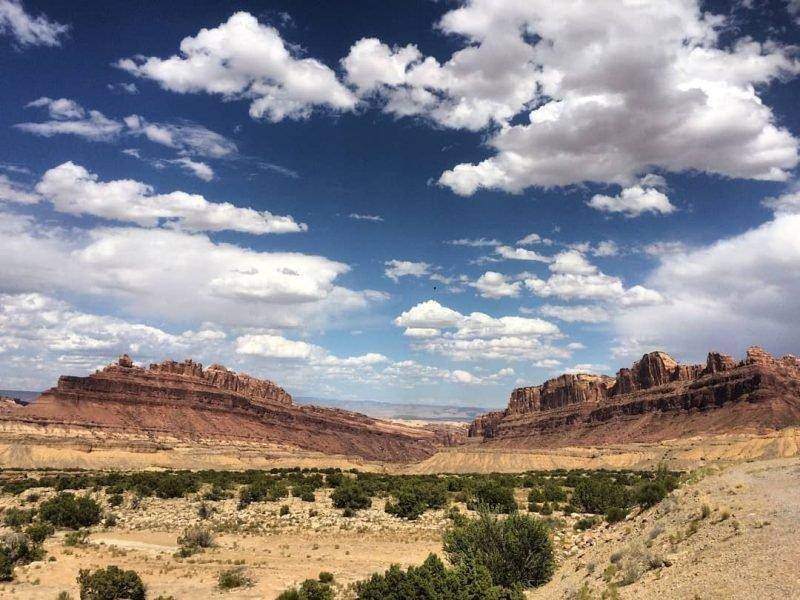By Ray Petersen
Recent letters to the editor and dialogue that Emery County Commissioners and the Emery County Public Lands Council has had with interested public make it very clear that the protection of motorized recreation and how it is accomplished in the Emery County Public Lands Bill is important to a lot of people. Having responded specifically to those letters, I also offer the following to further clarify the efforts that are in place to protect this specific resource.
For clarification, in this discussion I refer to motorized roads and routes. Non-motorized trails are addressed separately in the proposed legislation.
Emery County’s general plan states very clear direction concerning motorized travel on public land. It states that the County will advocate for and maintain access to natural resources, and to School Institutional Trust Lands Administration (SITLA) properties. It also states that access to recreation destinations via good roads is important. Extremely important to this discussion is the statement that Emery County will “work to preserve and maintain public land access routes, such as those recognized in legitimate land planning processes such as resource management plans and travel management plans.” The General Plan also states that we will participate as a cooperating agency in such management plans.
County “B” roads are those roads funded mostly by state fuel tax. They are maintained to a determined standard for the public and their legitimacy has not typically been called into question, by BLM or extreme environmental organizations. County “D” roads on the other hand are those roads for which there is not a funding mechanism, are perhaps “spot” maintained by the county or the users, if at all. Some “D” roads were constructed with heavy equipment sometime in the past. Others are “user created”, and exist because of repeated use. Up until 1976, if you needed to create a new road for the good of “the public”, you were free to do so, based on Revised Statute 2477. However, when the Federal Land Policy and Management Act (FLPMA) was passed in 1976, you were now required to obtain a Right-of-Way from the federal government to construct a new road. Legally, all public roads existing at that time were legitimate ROWs. Unfortunately, the federal government did not create a document (a map would have been great) which declared which roads existed at that time. The most current federal court ruling concerning these roads places the burden of proof on the State and Counties to prove, in court, that a particular road was used continually by the public for ten years prior to 1976. Hence the term “RS2477 roads”, and all the drama and controversy surrounding them.
In 2003, the Price Field Office BLM Route Designation Plan was signed into effect. The plan did not attempt to resolve the RS2477 issue, but it did make a decision as to which roads and trails it would recognize, and designated them as “open routes.” The roads and trails in question were mostly used for recreational purposes. Emery County had participated in the years and months of planning that preceded this document. The significance of the plan can’t be overstated. Two things are important to understand concerning this plan: 1. Motorized recreation on BLM land in Emery County would no longer take place “cross country”, but would be acceptable only on routes which were designated open. 2. All of the motorized trails designated open in 2003 are included in HR 5727.
The 2003 plan was later instated in full into the 2008 Resource Management Plan. The PLC chose to include these same routes (and others) in the Land Use Plan.
The Southern Utah Wilderness Alliance (SUWA) was opposed to the 2003 route designation plan and petitioned a federal judge for an emergency closure of the designated routes until they were more thoroughly evaluated. Judge Kimball denied their petition. SUWA again brought suit against the Travel Plan in the 2008 Richfield Resource Management Plan and five other plans in the state including Price, for not adequately considering cultural resources in the planning process. In a settlement agreement between the Department of the Interior (BLM’s parent agency) and SUWA, Judge Kimball directed each Field Office, including the Price Field Office, to re-evaluate the travel plans specifically in regard to impacts on cultural resources. Time tables were set for each plan, ranging from two to seven years for completion. Interestingly, Judge Kimball did not direct BLM to close any of the routes while the re-evaluation process proceeds.
At the initial meetings in 2009 with the motorized recreation folks, it was clearly communicated that this user group expected to be able to ride the same trails following passage of federal legislation as they were currently using. A little later the term ‘no net loss’ of motorized trails became the password for PLC regarding this resource. Every version of the map associated with the land use bill has included the routes designated open in the 2003 and 2008 plans.
Including the routes on the map in HR 5727 is a big deal. This is where the bill has some teeth regarding protection of motorized roads and trails. The language states that:
(2) Effect.—The map and legal description filed under paragraph (1) shall have the same force and effect as if included in this title,
Put another way, with the passage of the Emery County Public Lands Bill, the roads and trails that are currently open will have the protection of congress, by federal law.

